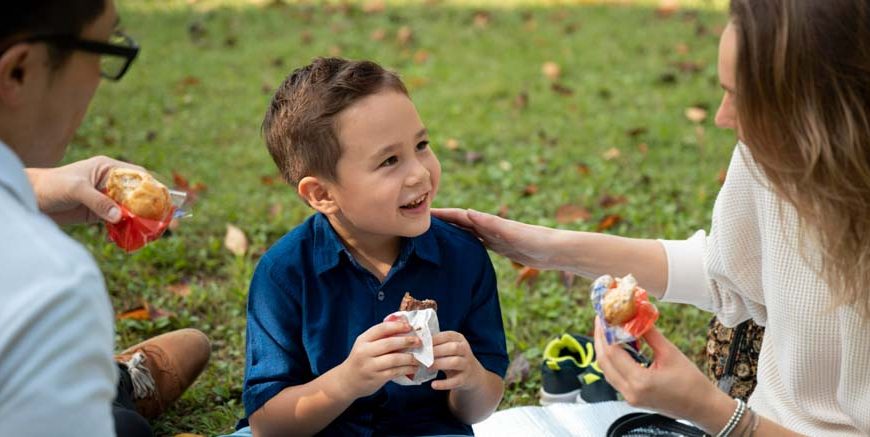Outdoor picnics are among the most cherished childhood memories. Whether it is a family day out or a school-organised trip, children enjoy the fresh air, playtime, and the sense of freedom that comes with spending a day outdoors. Yet, an enjoyable picnic also requires responsible preparation and awareness of safety guidelines. Understanding essential safety measures ensures that little ones can have fun without unnecessary risks. This is especially important for younger children, babies, and toddlers, who need close supervision during outdoor activities.
For parents and teachers, developing clear and practical safety rules for school picnics helps create a safe, structured environment. This guide explores everything from general outdoor safety to age-specific precautions, providing reliable and easy-to-follow safety tips for school picnics and family outings. With thoughtful planning, children can enjoy nature, play safely, and return home with happy memories.
Why Picnic Safety Matters for Young Children
Children are naturally curious and energetic. They explore spontaneously, which often leads to unexpected situations. While this curiosity is essential for learning and development, it can also increase the risk of minor injuries, dehydration, insect bites, or getting lost in crowded places. These concerns highlight the value of establishing clear safety rules while going for picnics for kids. When adults guide children with simple, consistent instructions, outdoor activities become both educational and safe.
Teachers organising school outings must also consider group management, medical needs, weather conditions, and transport safety. Schools often prepare thorough checklists to ensure maximum children’s safety in picnics, allowing students to enjoy outdoor learning without compromising well-being.
Essential Safety Rules for School Picnics
Schools usually set specific guidelines to maintain a safe environment during excursions. These safety rules for school picnics help teachers manage groups effectively while giving children the freedom to explore under supervision.
One important principle is maintaining small groups with dedicated caretakers so that each child receives adequate attention. Wearing identity tags with school details and emergency phone numbers is another simple yet effective measure. Teachers also carry first-aid kits, necessary medication, and allergy information for every child. Instructions regarding behaviour near water bodies, roads, and crowded public spaces are usually explained beforehand. These clear guidelines help children understand expectations and reduce potential risks during the outing.
Read More – Enjoyable Picnic Games and Activities to Entertain Kids
Safety Tips for Picnic for Children
Whether a picnic is organised by a school or by families, focusing on preventive care helps ensure a smooth experience. The following everyday safety tips for picnics for children cover hydration, hygiene, behaviour, and environmental awareness.
Children need regular hydration, especially in warm weather. Packing enough water and offering frequent reminders to drink prevents dehydration. Food should be stored in insulated containers to avoid spoilage, and children should wash or sanitise their hands before eating. Comfortable clothing suited to the weather is essential; sunhats and light layers protect against heat, while slightly warmer layers help in cooler climates.
Adults should select a safe picnic spot away from parking areas or deep water. Children must be encouraged to stay within clearly marked boundaries. Teachers and parents can also introduce simple buddy systems where children walk and play in pairs, making it easier for supervisors to keep track of everyone.
General Outdoor Safety Rules for Kids
Creating a strong foundation of outdoor safety begins with consistent guidance. These general safety rules while going for picnics for kids can be introduced early so that children develop lifelong habits.
Children must always inform an adult before moving to another area, even if it is nearby. Running on uneven surfaces can lead to falls, so walking carefully is encouraged. Insects, especially ants, bees, and mosquitoes, are common in picnic spots; teaching children not to disturb insects reduces the risk of bites or stings. Waste disposal is an essential part of environmental awareness, and children can be taught to dispose of wrappers and leftovers responsibly.
Respecting nature and wildlife is another valuable principle. Children should avoid picking plants, chasing animals, or touching unknown objects. Not only does this protect the environment, but it also keeps children safe from accidental contact with allergens or hazardous plants.
Read More – Fun Weekend Activities to do with your Family
Food, Hydration, and Allergen Awareness
Picnics naturally involve food, making it essential to ensure hygiene and child-friendly meal choices. Parents and teachers should be mindful of food allergies, especially when organising group meals. Schools often request allergy declarations from families to avoid dangerous reactions during outings.
Hydration is equally important. Water should be preferred over sugary drinks, as it helps regulate body temperature and keeps children energised. Fresh fruits, sandwiches, and healthy snacks are good choices, as they provide sustained energy without causing discomfort during active play.
All food should be stored carefully in insulated containers. Perishable items must be kept cool to prevent bacterial growth, ensuring that meals remain safe throughout the journey.
Supervision and Boundary Setting
Effective supervision is the backbone of children’s safety in picnics. This includes constant headcounts, planned activity zones, and clear instructions regarding safe areas. Setting physical boundaries, such as shaded trees, picnic mats, or markers, helps children understand where they can play.
Supervisors should position themselves so they can see the entire group. Younger children, in particular, require closer attention as they may wander unintentionally. Regular intervals of quiet check-ins, where children return to a central point, make supervision manageable and structured.
Emergency Preparedness
Preparedness plays a vital role in preventing minor issues from becoming serious concerns. First-aid kits should include antiseptic wipes, adhesive bandages, cold packs, and any prescribed medication for students. Adults must be aware of children with asthma, allergies, or other medical conditions.
Chaperones should also have a list of emergency contacts as well as knowledge of the nearest medical facility. Teaching children simple safety responses, such as staying in place if they feel lost, helps reduce panic and ensures faster assistance.
Transport Safety for School Picnics
Travelling safely is just as important as the outdoor experience itself. Schools that organise picnics usually follow strict safety tips for school picnics related to transport. School buses must be well-maintained, fitted with proper seating, and supervised by trained staff. Children should understand basic transport etiquette such as staying seated, keeping aisles clear, and speaking softly so the driver can concentrate.
Teachers conduct headcounts before departure, during stopovers, and before returning to school. Seat belts, where available, should be worn at all times. These measures provide an additional layer of protection during the journey.
Picnic Tips for Baby and Younger Children
Parents taking babies or toddlers on a picnic must exercise extra caution. Reliable picnic tips for babies include carrying a clean mat, shade cover, sanitising wipes, and a full set of feeding essentials. Babies should be kept away from direct sunlight and should remain hydrated through breastmilk, formula, or water, depending on age-appropriate guidelines.
For toddlers, packing familiar snacks, small toys, and extra clothing makes the experience smoother. Parents should ensure toddlers do not put unknown objects in their mouths and always wash hands before eating. Choosing a quiet, low-traffic spot ensures that babies and toddlers remain safe while enjoying the outdoors.
Weather Awareness and Seasonal Precautions
Picnics depend heavily on weather conditions. During warm months, children may experience sunburn or heat exhaustion without proper protection. Sunscreen, hats, and shaded seating help maintain comfort. In cooler months, layering clothes ensures warmth during outdoor play.
Parents and teachers should also monitor sudden weather changes. Strong winds, rains, or extremely hot conditions can make outdoor areas unsafe. Having a backup indoor plan ensures that the outing remains enjoyable and risk-free.
Eco-Friendly Practices for Children
Picnics offer an excellent opportunity to teach children about protecting nature. Simple habits such as picking up litter, conserving water, and avoiding plastic waste help build environmental responsibility. Teachers can turn these lessons into engaging activities, encouraging children to become thoughtful caretakers of their surroundings.
Reusable water bottles, cloth napkins, and stainless-steel lunch boxes are better alternatives to single-use plastics. Children can also participate in small clean-up drives around the picnic area, learning the value of teamwork and sustainability.
How EuroKids Encourages Safe Outdoor Learning
At EuroKids, outdoor learning is an integral part of early childhood development. Their approach aligns with the Heureka Curriculum, which focuses on experiential learning, sensory exploration, and age-appropriate skill development. Picnics and nature walks are thoughtfully planned to offer a blend of fun and educational value while ensuring excellent safety standards.
EuroKids educators are trained in first-aid and follow structured procedures during outdoor activities. They maintain optimal teacher-to-child ratios, establish clear safety guidelines, and prepare children in advance about responsible behaviour. These practices help children enjoy learning beyond the classroom while staying safe and supported.
Conclusion: Safe, Structured, and Memorable Picnic Experiences
Picnics are wonderful opportunities for children to explore the outdoors, bond with peers, and learn from nature. With careful planning, clear guidelines, and age-specific precautions, outdoor trips can be safe, enjoyable, and enriching. Whether it is applying safety rules while going for picnics for kids or following practical safety tips for picnics for children, responsible supervision ensures a stress-free outing for everyone.
EuroKids places great emphasis on safety, structured learning, and joyful experiences. Through the thoughtfully designed Heureka Curriculum, children engage in activities that nurture curiosity and independence while prioritising well-being. Parents seeking a preschool that values both fun and safety can explore EuroKids Admissions, where expert educators offer a secure and nurturing environment for young learners.
Related Blogs
1. Winter Activities for Preschool Students
Discover fun, age-appropriate winter activities that spark creativity and learning. From indoor sensory play to cosy craft ideas, this blog helps parents and teachers keep preschoolers engaged throughout the season.
2. Tips for Keeping Your Child Warm This Winter
Get practical and reliable tips to protect your little one during the chilly months. Learn how to layer clothing correctly, maintain healthy routines, and keep children comfortable without restricting movement.
3. Winter Clothing for Kids: Stay Warm and Stylish
Explore a helpful guide on winter essentials for children. Find suggestions for thermals, outerwear, accessories, and stylish yet functional outfits to ensure your child stays warm and confident all winter long.















